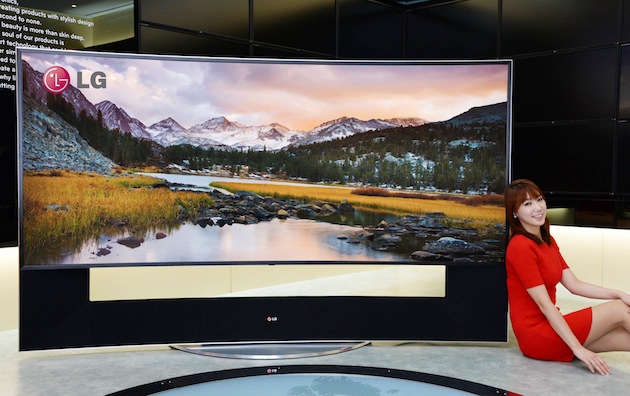 What was the most important thing to you when buying your last TV set. I bet I can guess it in one. What will be the single biggest factor in deciding what your next TV purchase will be? I guarantee it will be the same answer: picture quality. At least that’s what research from analysts Futuresource indicates.
What was the most important thing to you when buying your last TV set. I bet I can guess it in one. What will be the single biggest factor in deciding what your next TV purchase will be? I guarantee it will be the same answer: picture quality. At least that’s what research from analysts Futuresource indicates.
According to projections for 2015, 4K (or ultra HD) televisions are on track for a sales boost of 147% over 2014. Not bad for a format with meagre broadcast support and even little to none in the on-demand space. This makes the TV market a fascinating place to be as units sold went up 3% in 2014 to 235 million units globally, including a 3% increase in Europe. As the PC market struggles to cope with diversification of form factors, dud operating system releases (looking at you, Windows 8) and the dominance of mobile devices, TV doesn’t suffer from the same level of fragmentation, despite numerous technologies vying for attention.
Still, I bet image resolution was the top reason you bought your last TV to keep up with the mainstreaming of HD broadcasting and Blu-ray. Later this year we’ll be going one step further again as Sky and BT rollout ultra HD (4K) sports broadcasting and Netflix continues its adventures in 4K by shooting all its latest shows in the format and scaling down for viewers on less capable broadband connections.
What’s remarkable is the speed at which the market is coming around to higher resolutions when 480p standard definition was the norm until the late noughties. Within a decade we have seen consumers switch up not once but, possibly, twice.
While picture quality is king in the TV space and content essential in proving that more pixels equals more fun, some selling points have failed to drive the market. The 3D experiment came and went, plasma was supplanted by LCD and LED, touch screens were even more alien in the front room than on the laptop.
Trending topics
Where Futurescore’s forecast is bullish on 4K, and the appetite for bigger and slimmer screens is growing there is less enthusiasm for this year’s modish trends like curved screens and connected platforms like Android and webOS. A quick Google through the larger Irish electrical retailers I found a 55″ 1080p curved screen TV from Samsung and an LG 4K Smart TV of the same size selling for €1,299. You won’t find a set offering both for less than €1,500. The €300 I forked out in the sales for a 38″ 1080p set that doesn’t take over my front room looks like a better deal every day. And on the subject of size, according to Gap Intelligence, the most popular screen size in US TV sales was in the 50″-59″ bracket.
Despite the reliance on content and the popularity of streaming services like Netflix, Amazon Prime and Ireland’s own Volta, Internet connected Smart TV platforms are not proving a draw on their own. Perhaps this is due to UPC and Sky having apps on their own boxes that do the same job or the popularity of Google’s Chromecast dongle or Roku’s devices that turn any TV into a smart TV.
The bump from the analogue switch-off in Europe has ended and the lack of a big ticket international event like the FIFA World Cup or the Olympics will have a cooling effect on the market. Sorry IRB, the Rugby World Cup doesn’t have that kind of pull.
The lesson from all this? The PC space isn’t a great indicator of the wider cnosumer electronics market. TVs are getting bigger, slimmer, brighter and more expensive and no one seems to be complaining. It’s all predicated on doing the one thing people want it to well. Get the picture?







Subscribers 0
Fans 0
Followers 0
Followers